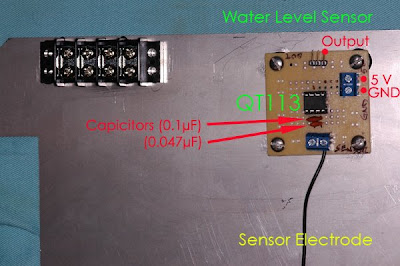I have just completed a table that is a summary of how all of the different hardware modules connect to the analog, digital, (+v), and ground pins on Arduino. These connections really follow directly from the software code that is used for this project. I thought that I'd just publish them in one place to help anyone contemplating the joining of Silvia and Arduino!
This table shows the module (hardware) to Arduino pin connections for two possible Silvia and Arduino configurations. The two configurations are designated by the interface method of input to Arduino, which in turn controls Silvia's actions.
If you want to use the Wii nunchuck as the interface for input to Arduino, then use the information provided in the column labeled: "ARDUINO PIN Wii Interface"
If you want to use a 6-button interface (of what ever design you like) for input to Arduino, then use the information in the column labeled: "ARDUINO PIN Button Interface"
Keep in mind that this table corresponds only to the specific hardware design that I used for the components in Silvia. My design differs from that of Tim Hirzel, this has to do with my use of the Opto 22 optoisolators to sense the status of the face panel switches, whereas Tim chose a low voltage re-wire of these switches. This then necessitated the use of two additional SSR's for control of the Silvia's pump and solenoid. If you want to go in Tim's direction, then the changes are self evident from looking at his SNV code.
One last note...
It was difficult to get this table to format for HTML, so if it is hard to read, just use ^Control + to make the text larger... good luck!!
| MODULE | MODULE LEAD | ARDUINO PIN
Wii Interface | ARDUIO PIN
Button Interface | COMMENTS |
|---|---|---|---|---|
| Wii nunchuck |
|
|
|
|
|
| (+) | 3.3v |
|
|
|
| (-) | GND |
|
|
|
| SDA | ANALOG 4 |
| } I2C |
|
| SCL | ANALOG 5 | ||
|
|
|
|
|
|
| Button Interface |
|
|
|
|
|
| UP |
| DIGITAL 3 | 6-button interface is used in place of the
Wii nunchuck. Many hardware options are available |
|
| DOWN |
| DIGITAL 4 | |
|
| RIGHT |
| DIGITAL 5 | |
|
| LEFT |
| DIGITAL 6 | |
|
| C |
| DIGITAL 12 | |
|
| Z |
| DIGITAL 13 | |
|
|
|
|
|
|
| Real Time Clock |
|
|
|
|
|
| 5v | 5v | 5v |
|
|
| GND | GND | GND |
|
|
| SQW | Don't use | Don't use |
|
|
| SDA | ANALOG 4 | ANALOG 4 | } I2C |
|
| SCL | ANALOG 5 | ANALOG 5 | |
|
|
|
|
|
|
| Temp Amplifier
AD595CQ |
|
|
| If LM34AH-ND is not used |
|
| 5v | 5v | 5v |
|
|
| SIG | ANALOG 0 | ANALOG 0 |
|
|
| GND | GND | GND |
|
|
|
|
|
|
|
| Temp Sensor
LM34AH-ND |
|
|
| If
AD595CQ is not used |
|
| Vs+ | 3.3v / 5v* | 3.3 / 5v* | * Adjust Calibration |
|
| Vout | ANALOG 0 | ANALOG 0 |
|
|
| CASE (GND) | GND | GND |
|
|
|
|
|
|
|
| Water Level Sensor
QT113 |
|
|
|
|
|
| Lead from pin 1 | 5v | 5v |
|
|
| Lead from pin 2 | ANALOG 3 | ANALOG 3 |
|
|
| Lead from pin 7 | Sensing Electrode | Sensing Electrode |
|
|
| Lead from pin 8 | GND | GND |
|
|
|
|
|
|
|
| PB4 Optoisolators | 1. (5v) | 5v | 5v |
|
|
| 2. (GND) | GND | GND |
|
|
| 3. Top Center | DIGITAL 11 | DIGITAL 11 |
|
|
| 5. Lower | DIGITAL 10 | DIGITAL 10 |
|
|
| 7. Middle | DIGITAL 9 | DIGITAL 9 |
|
|
| 9. Upper | DIGITAL 8 | DIGITAL 8 |
|
|
|
|
|
|
|
| Sparkfun LCD |
|
|
|
|
|
| 5v | 5v | 5v |
|
|
| GND | GND | GND |
|
|
| RX | DIGITAL 3 | DIGITAL 2 | #define but don't use |
|
| TX | DIGITAL 2 | DIGITAL 1 | |
|
|
|
|
|
|
| Heater Relay SSR |
|
|
|
|
|
| (+) | DIGITAL 7 | DIGITAL 7 |
|
|
| (-) | GND | GND |
|











